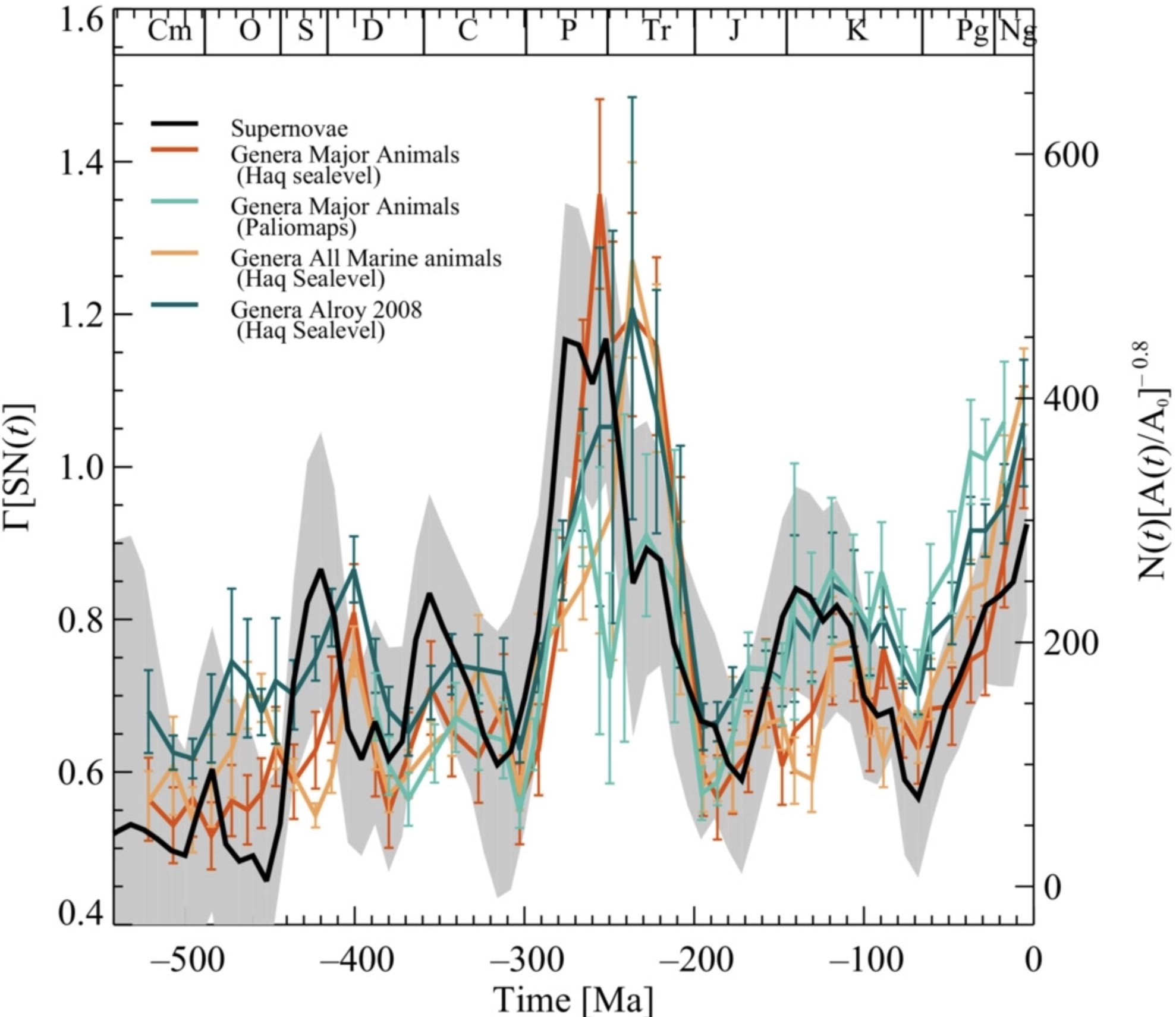New study: Supernovae influence Earth's long-term climate, bio-diversity and evolution
A new study shows how supernovae influence Earth's climate. The implication is a surprisingly influential role of stellar processes on terrestrial evolution.
A supernova is one of nature’s greatest explosions. It’s the endpoint of the life of certain types of stars that occurs with the outpouring of vast amounts of energy making the luminosity of the explosion many billions of times brighter than our Sun. In doing so supernovae scatter heavy elements throughout the cosmos allowing the formation of new stars, planets, and you and I. During the explosion they also propel protons and atomic nuclei at close to the speed of light. These are known for historical reasons as cosmic rays, and the pervade the galaxy and beyond. New research extends their influence to the long-term biodiversity of life on Earth.
Over the last two decades there has been significant progress in appreciating that cosmic rays have an important influence on the Earth’s climate through their influence on the atmosphere, both on short and on geological timescales. A decade ago a connection between supernovae and life was discussed by Henrik Svensmark of the Technical University of Denmark which provided a robust assessment of the change in supernova frequency over the Phanerozoic period - the era covers the last 540 million years, the one in which animal and plant life has existed.
In his latest paper Svensmark finds a close correlation between changes in supernovae frequency during the solar system’s galactic orbit and changes in the diversity of marine animal genera over the Phanerozoic era. He suggests that changes in the frequency of supernova in the Earth’s galactic vicinity and the area of shallow marine margins on the edges of continents have been vital in shaping the diversity of marine life. This is because the flooding of continents as they move opened up new regions where new species can evolve.
The interpretation is that changes in cosmic rays play a role in determining climate which is responsible for the available energy in the ocean–atmosphere system. Climate thereby determines the mixing and transport of fundamental nutrients like iron, nitrogen, phosphor, and carbon in the oceans and atmosphere. Although the correlations do not mean that there are no other influences are affecting diversity, they suggest an effect of supernovae on diversity.
But the idea of a role for supernovas in biodiversity is based on more than just the demonstrated correlations. Adding to the picture is that supernovae frequency correlates with the burial of organic matter in sediments over the past 3.5 billion years, supporting the hypothesis that supernovae link the climate, the flux of nutrients, and bio-productivity.
The results depicted in Figure 1 are consistent with the hypothesis that supernovae influence climate, which influences circulation and thereby the flow of nutrients, which impacts the bioproductivity and finally affects the genera-level diversity. The estimated supernovae rate is plotted along with various estimates of biomarine diversity.
Many have speculated about the disastrous consequences for humanity of a supernova going off in the solar neighbourhood. It seems, however, that in the cosmos supernovae give to life as well as taking it away.
For more information
Supernovae and life on Earth appears to be closely connected
A Persistent Influence of Supernovae on Biodiversity Over the Phanerozoic
Feedback: david.whitehouse@netzerowatch.com

